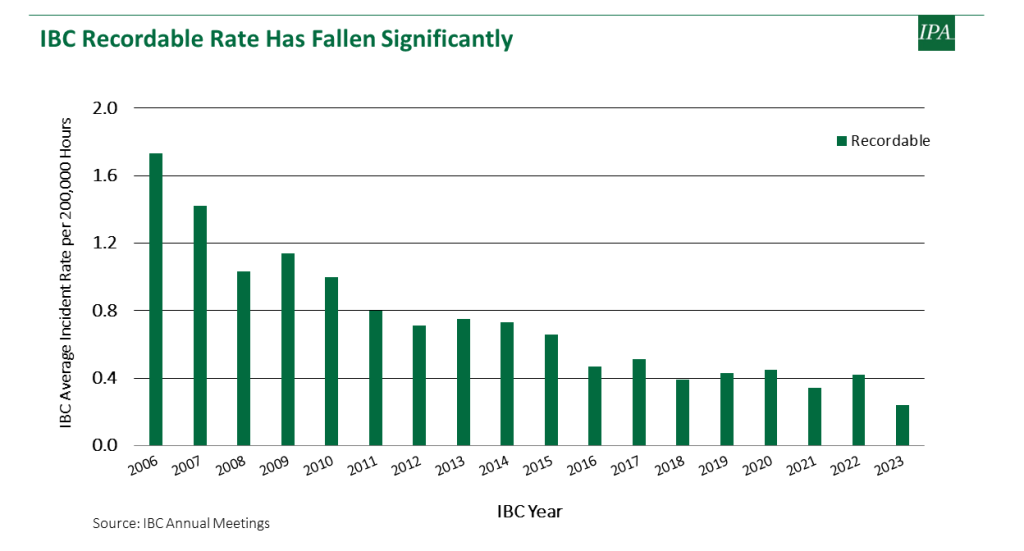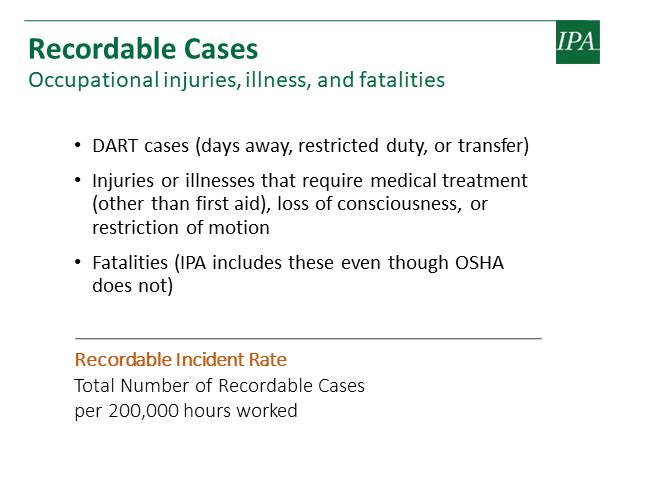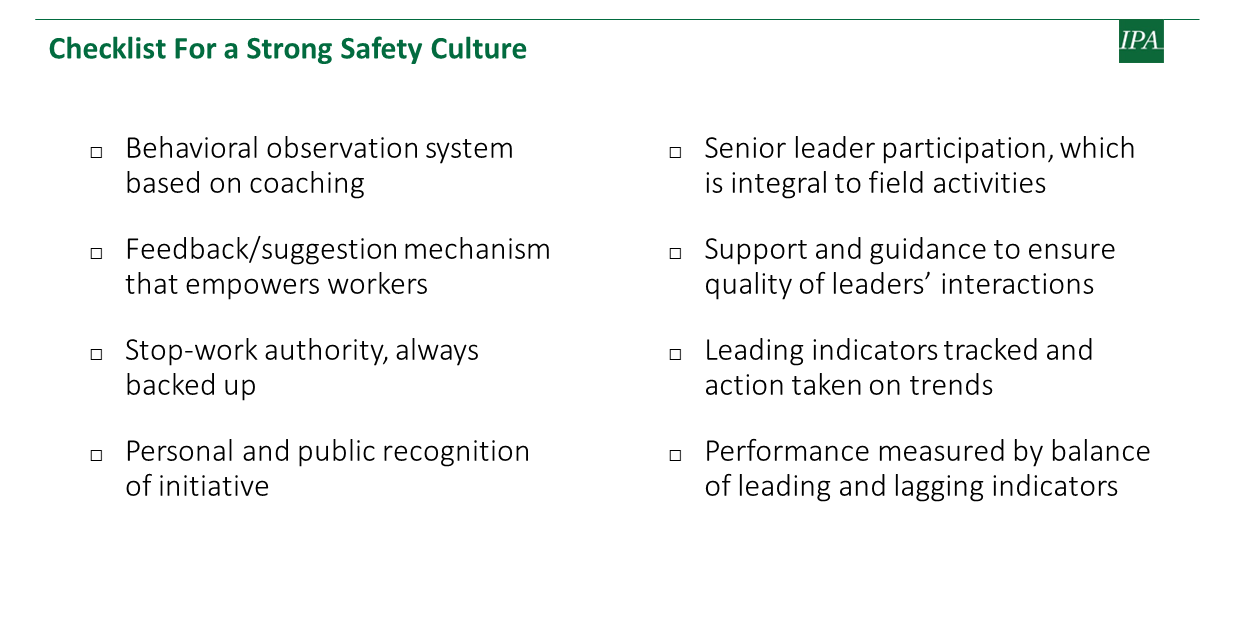Building a Sustainability Culture in Capital Projects
During IPA’s most recent Carbon Working Group (CWG) meeting in August 2023, a comment about “winning the hearts and minds of project teams” really struck me. We were discussing barriers to incorporating sustainability goals into capital projects, and the person said that resistance or indifference by some project team members—in other words, a lack of strong sustainability culture—was a barrier to thorough identification, investigation, and implementation of alternatives to improve sustainability performance.
I had not heard that before as an issue. Then, it came up again in a few more conversations I had with both capital project and sustainability leaders. A couple of months ago, I relocated from Singapore to Houston, Texas, taking on a new IPA role—Global Director of Sustainability. Since landing in Houston, I have been reaching out to and talking with as many people as possible about sustainability and capital projects.
Capital projects are an important vehicle for IPA clients to advance progress towards meeting their sustainability goals. Corporate or business mandates for sustainability do not magically manifest into engineering designs. Project teams have to do the technical and economic studies to evaluate ways of meeting sustainability targets and then do the engineering to implement the selected alternative. Teams reluctant to do that work will cause delays and missed opportunities.
Also, it is not just the hearts and minds of project teams that need to be won. An IPA colleague was facilitating a strategy session for a company’s expansion project. When the subject of sustainability goals was raised, the sponsor said in effect “this is a schedule driven project—there is not enough time to identify ways of reducing emissions, water, and waste.” To the sponsor, the schedule priority far exceeded the company’s sustainability imperative.
Building a Safety Culture as a Model for Building a Sustainability Culture
Project people I talk to say the same effort that built a safety culture within their company is what is needed to build a sustainability culture.
I will return to the definition of a safety culture in a bit, but for now let’s say it means safety is a company core value and number one priority. There are no compromises or trade-offs made that jeopardize safety.
Sustainability is not exactly the same. Compromises and trade-offs are integral to the activity.
Sustainability is often defined as the triple bottom line, the intersection of economic profit, environmental performance, and community and social development. Business success is finding the right balance between these objectives.
Do not get me wrong. Building a sustainability culture will not make the challenge go away. There will still be hard choices to make. But, a company with strong sustainability culture strives to explore options for the triple bottom line in a rigorous and deliberate way in all its activities.
People cite safety culture because it produced tremendous improvements in construction safety performance. The figure below shows the remarkable construction safety improvement achieved by companies participating in IPA’s Industry Benchmarking Consortium (IBC) since 2006. IBC participants are world leading companies in the extractive, processing, and manufacturing industries. As you can see, the average rate of recordable incidents dropped 86% in just over 15 years!


How to Build a Safety Culture
There are many definitions of what safety culture means, but this statement is a good summary: “Almost all of those attempting to define the safety culture construct agree it reflects a proactive stance to improving occupational safety and the way people think and/or behave in relation to safety.”[1] The same definition could be adopted for building a sustainability culture.
The transformation to a safety culture starts by establishing organizational goals and management practices codified in corporate policy and safety management systems to ensure consistency project-to-project through plans and procedures, targets, and controls.
But more than policies and procedures are needed to get people to change “the way they think and/or behave in relation to safety”—winning hearts and minds, in other words. As one person recounted to me, “At first it was difficult to get people to embrace safety programs, exhibit the right behaviors, and get improvement. Over time, driven from the top down, people adopted construction safety as a core value.”
An IPA study in 2016 about project safety culture[2] developed this checklist for a strong safety culture by identifying what the best safety performers did more consistently than the others:

Common threads in the list are deep senior leadership engagement, management integrity to always put safety first, working-level recognition and encouragement, and measurement of leading and lagging indicators.
Anyone who says we do not have time for safety would get fired in a company with a strong safety culture. That business sponsor mentioned earlier working in a company with a strong sustainability culture will have much greater focus on the triple bottom line and not dismiss it so quickly.
A Sustainability Culture Is Not Enough
Culture cannot achieve much without robust multi‑year, often multi‑decade, business and technology strategies for sustainable development. As a recent IPA survey done at the CWG meeting shows, only some companies have started to make progress toward this effort.
A company without a strong project system will struggle to incorporate sustainability targets into projects. The same is true for construction safety, by the way. Companies with weak project delivery systems do not achieve top construction safety performance.
How You Can Contribute to Advance Sustainability
I have started a research study for our upcoming Industry Benchmarking Consortium (IBC) conference to be held in March 2024 to get a more complete picture of the project practices and system elements required for sustainability excellence. The importance of a sustainability culture is one of the things to examine. The study will by no means answer all the questions, but it will advance our understanding.
My colleagues and I will be collecting data through the projects IPA evaluates and categorizing the different organizational and management approaches to sustainability by surveying and talking with IBC participants.
Even if you are not a member of IBC, please contact IPA if you want to contribute. Everyone’s input to the monumental challenge we face is welcome.
[1] Claude Gilbert, Benoît Journé, Herve Laroches, and Corinne Beder (Eds.), Safety Cultures, Safety Models: Taking Stock and Moving Forward, p. 49, Cham: Spring Nature Switzerland, 2018.
[2] Tim Jeanneret and Arkadii Lebedinskii, Project Safety Culture—Principles and Practices of the Best Performers, IBC 2016, IPA, March 2016.